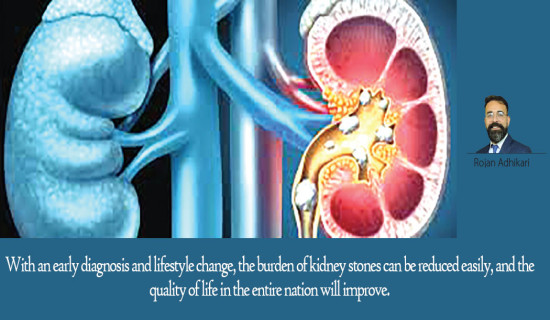- Friday, 29 August 2025
Digital Payments In Aviation
An e-commerce sales channel is any online/digital platform where an airline merchant directly sells its services (flight tickets and ancillaries) to customers. For this reason, deploying an appropriate payment solution is always an integral part of the overall sales strategy. When we talk about deploying payment solutions, it's about a payment process from customers to the airline merchant to buy the services, and refunding money from the airline merchant to customers for unused services.
Since 1963, SABRE (Semi-Automated Business Research Environment) has been the first Computer Reservation System (CRS) introduced by American Airlines. Airlines are working to improve digital means in every aspect of their operations, including the distribution process. The extension of CRS to GDS (Global Distribution System) solutions helped airlines, including travel agencies, in their distribution process. Implementing an e-commerce channel, including an online check-in process, is an additional layer of effective digitalization and distribution. The start of providing online booking services at customers' fingertips through their website by airlines in the decade of 90's was a significant shift in this regard. Since then, it's evolving in multiple aspects.
According to the Global Payment Report 2025, published by Worldpay, a leading payment service provider and fintech company, the global e-commerce business volume will exceed US$10 trillion in 2030, which was $6.8 trillion in 2024, $ 3.9 trillion in 2019, and $ 1.2 trillion in 2014. Customers attraction towards e-commerce channels is common in the airline industry and is growing daily. As such, customers must be provided with a convenient, fast, and secure payment solution for checkout.
Since the channel shift is evident, airlines will have the opportunity to make their e-commerce platform robust to achieve sustainable revenue growth and optimize payment processing and distribution costs. At the same time, it's acknowledged that a transaction through an e-commerce sales channel is surrounded by many challenges from the merchant, customer, payment solution service provider, and regulator's perspectives. Nowadays, an airline's significant challenge is selecting an appropriate payment method that caters to each market.
Each market has different payment options. Other challenges include choosing the right
Payment Service Provider (PSPs), protecting the transactions from fraudsters, complying
with data protection laws, and maintaining the laws that protect customers' rights in each country.
Credit and debit cards (bank cards) are commonly used payment options in the airline's global digital platform. Digital wallets and local payment options are more market-specific. Credit cards are still predominantly used in many markets. However, issuing and using cards for international transactions is still heavily regulated in many countries because of their foreign exchange reservations. We cannot think of using a credit card in some of the underdeveloped/developing countries in Asia, Africa, and Latin America the same way customers use cards in developed countries.
From the customer/buyer's perspective, buying flight tickets online is convenient for those with international credit and/or debit cards. However, it's a big challenge for buyers in markets where foreign currency is regulated. For example, airline merchants outside Nepal and India do not accept the cards issued in Nepal unless a Nepalese bank issues the card in a specific foreign currency. Some local payment service providers (e.g., eSewa, IMEpay, etc.) in Nepal already offer digital wallet solutions for local currency transactions for local airline merchants. Still, it's challenging for Nepali buyers to transact with international airline merchants using these digital wallets. The same situation is prevailing in many other Asian and African countries.
From the airline merchant's side, the first challenge is to select appropriate means of payment options and PSPs, followed by the necessity of making their e-commerce platform secure from possible fraud attacks.
Regarding using cards as a payment option, Worldpay's GPR 2025 report said, "Cards are as relevant as ever. Card networks relentlessly innovated to dominate the previous half-century of consumer payments. They're as strong as ever despite fierce competitive pressure and regulatory scrutiny. Cards dominate when viewed as a whole — inside and outside wallets — and card networks continue to retool to compete against rising fintech, banks, and national payment systems."
The card scheme's compliance requirement with the Payment Card Industry Data Security Standard (PCI DSS) helps a lot in card payment security. However, this is still not workable if the requirement is not included in the central bank's regulations. The card issuer and card acquiring service providers are the financial entities that the country's central bank monitors. Unfortunately, local payment options may not have this level of security to protect airline merchants and customers from possible fraudulent attacks.
As per Worldpay's report mentioned above, digital wallets' contribution to the e-commerce sales channel in 2014 was 34 per cent, which increased to 66 per cent in 2024, and is forecasted to be at 79 per cent in 2030. Since cards are still a significant funding source for digital wallets, increasing their use requires properly reviewing their security.
Global Distribution Service (GDS) provider and PSPs are two different entities, but their active contribution towards completing online transactions on the digital platform is essential in this process. Neither situation, where a ticket is issued but payment is not collected/confirmed, nor a situation where payment is collected but a ticket is not issued to the customer, is intended. The first situation directly affects an airline's P&L statement, and the latter creates customer inconvenience.
Further, protecting their customers from fraudulent transactions and protecting their own revenue from fraudsters are other challenges that airline merchants face today. A proper design of business rules for fraud screening helps, but it depends on the level of data that the airline holds and the fraud screening service provider they selected. An increase in fraudulent transactions affects not only the immediate revenue but also the airline's brand image in the long term. Again, this is a cost centre for the airline, so selecting an appropriate and effective fraud prevention solution provider is essential.
Finally, the success or effectiveness of an airline's e-commerce platform in increasing revenue and reducing payment processing costs depends on how the airline addresses all these challenges. How they address the challenges effectively also depends on how strong their database and research ability are.
(The writer has an experience in the global card processing and payment solution area with an international airline in the Middle East.)
















